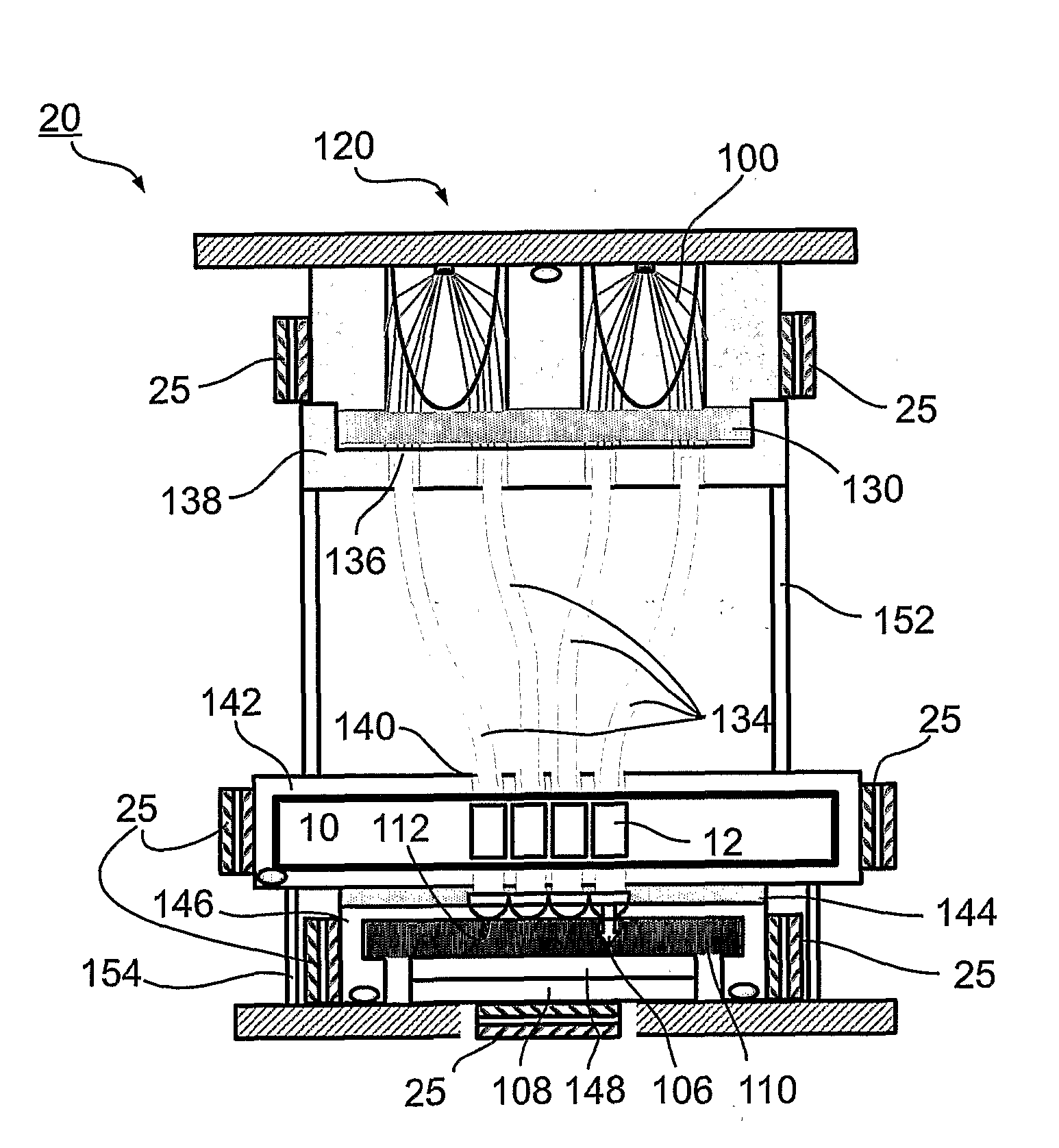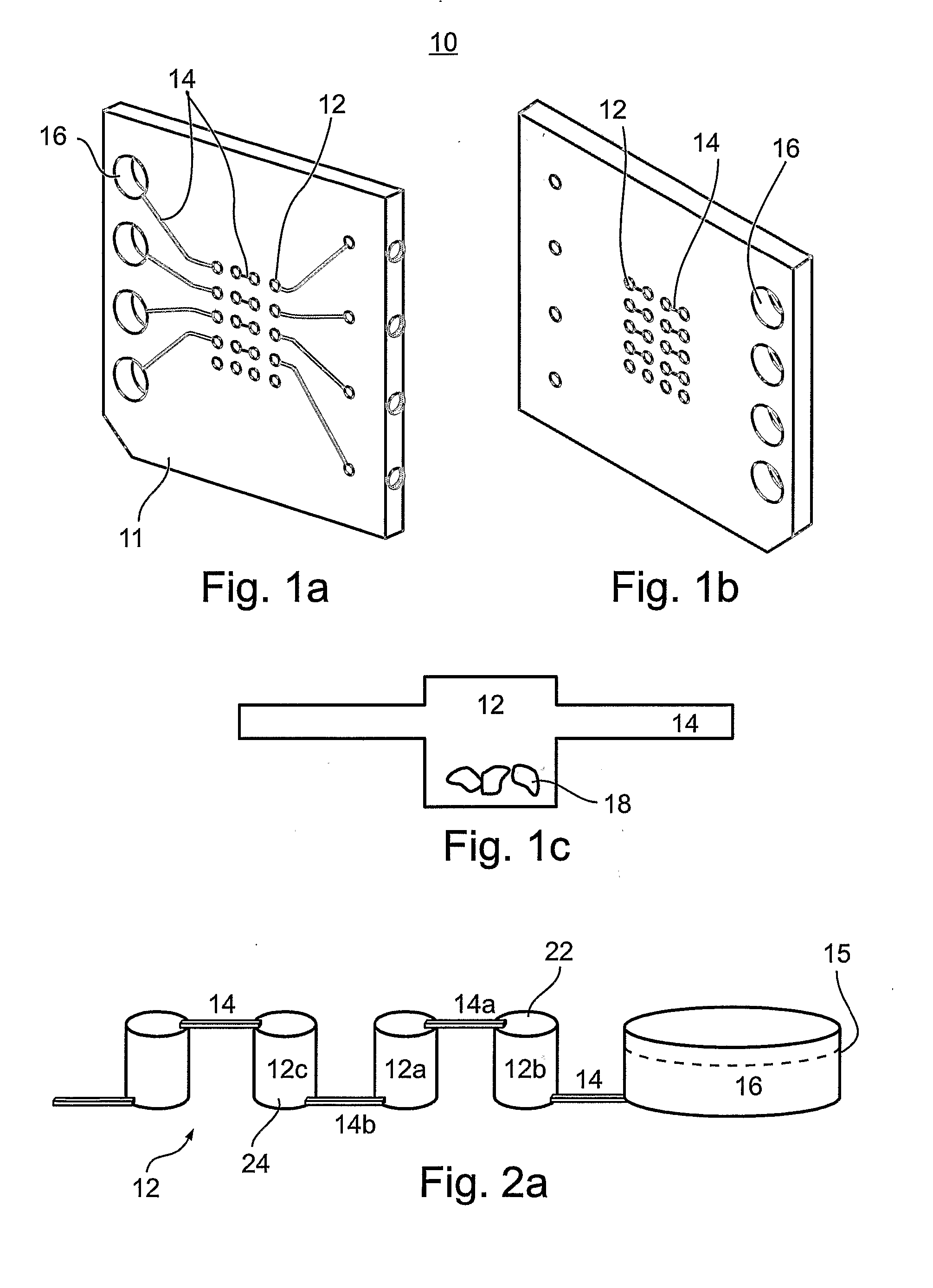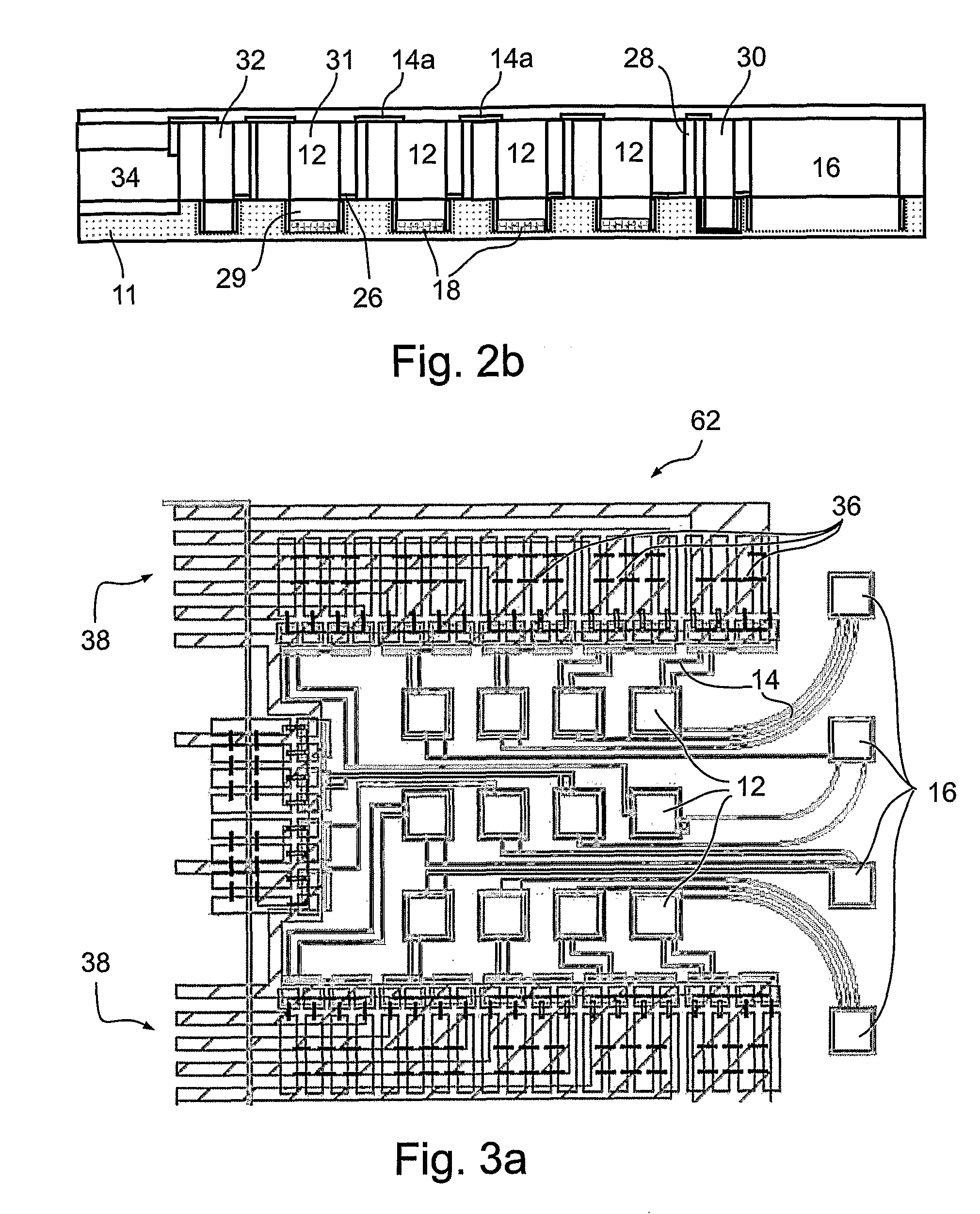Method and System for Detecting Analytes
a technology of analytes and detection methods, applied in the field of methods and systems for detecting and/or identifying analytes, can solve the problems of unable to achieve partial success, inability to develop microfluidic devices, and inability to conveniently and safely detect and measure low levels of compounds
- Summary
- Abstract
- Description
- Claims
- Application Information
AI Technical Summary
Benefits of technology
Problems solved by technology
Method used
Image
Examples
example 1
[0382] Reference is now made to FIG. 22a-b exemplifying an electronic diagram of a CMOS detector 200, which can be used as detector 108, according to a preferred embodiment of the present invention. CMOS detector 200 is known in the art and can be purchased, for example, from Fill Factory, Mechelen Belgium.
[0383] CMOS detector 200 comprises a matrix 201 of elementary units 202 referred to herein as pixels 202. FIG. 22b shows one pixel 202, which comprises a capacitor 204 which is pre-charged to a reset bias voltage, a photodiode 206, for discharging capacitor 204 in response to photons absorption and 3 MOS transistors, designated 208a, 208b and 208c, for resetting (transistor 208a), sensing (transistor 208b) and leading (transistor 208c) the signal to column amplifier 210.
[0384] CMOS detector 200 further comprising a left vertical shift register 212 and a right vertical shift register 214. Left register 212 serves a pointer to a row that is pre-charged to reset bias ...
example 2
Determination of Analyte Concentration Using the Detected Signals
[0392] Reference is now made to FIGS. 23a-c, which illustrate the radiation emitted by one reaction chamber of device 10.
[0393]FIG. 23a illustrates reaction chamber 12, a plurality of locations 320, where biological cells generating the florescent materials are located, and a slice 322 defined in accordance with a preferred embodiment of the present invention. Reaction chamber 12 has an aperture 326 through which optical signals 106 (not shown, see FIGS. 23b-c) exit. In the following calculations, slice 322 is represented as equivalent light emitter 324, shown in FIG. 23b. Equivalent light emitter 324 is a superposition of the all the light emitter in slice 322 and can be defined, for example, by integration or summation. Also shown is excitation light 100 and optical signal 106 emitted in a plurality of directions.
[0394]FIG. 23c illustrates the spreading of optical signal 106 through aperture 326 of the reaction ch...
example 3
Sensitivity Calculation
[0417] As stated, the emission intensity is proportional to the biochemical reaction percentage expressed by the nGFP parameter. In the present example, a sensitivity calculation is performed using a signal uncertainty parameter, which is proportional to the unfiltered excitation intensity detected by the light detector:
Iunc−px=Un2B·Iexc−px·QEexc, (EQ. 24)
where Iunc−px is the signal uncertainty parameter, Un2B is the ratio between the uncertainty to the background radiation, Iems−px is the unfiltered excitation intensity as detected by the light detector and QEexc is, as stated, the effective quantum efficiency of the detector for excitation light. A typical value for Un2B is about 0.5.
[0418] The minimal sensitivity is preferably defined such that the sensed optical signal is at least S2Un times stronger that the signal uncertainty, where S2Un is the ratio between the signal to the uncertainty:
Iems−px·QEems≧S2Un·Iunc−px, (EQ. 25)
where Iems−px is the ...
PUM
 Login to View More
Login to View More Abstract
Description
Claims
Application Information
 Login to View More
Login to View More - R&D
- Intellectual Property
- Life Sciences
- Materials
- Tech Scout
- Unparalleled Data Quality
- Higher Quality Content
- 60% Fewer Hallucinations
Browse by: Latest US Patents, China's latest patents, Technical Efficacy Thesaurus, Application Domain, Technology Topic, Popular Technical Reports.
© 2025 PatSnap. All rights reserved.Legal|Privacy policy|Modern Slavery Act Transparency Statement|Sitemap|About US| Contact US: help@patsnap.com



